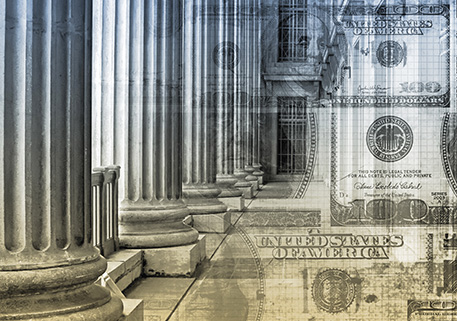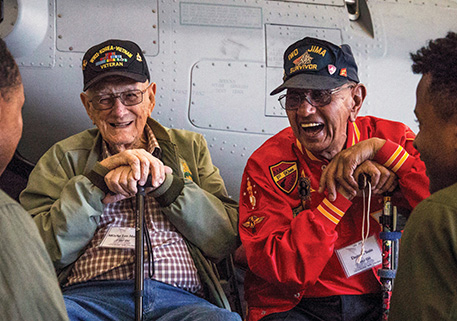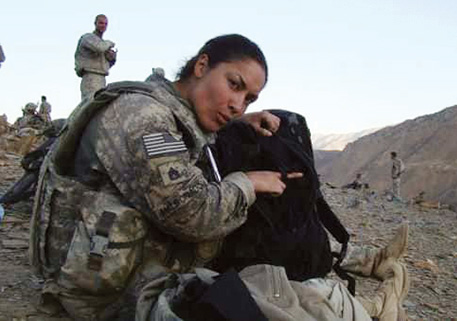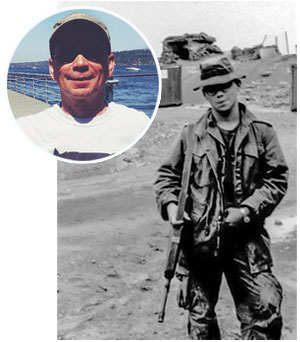
Celebrating one of the most significant and successful pieces of federal legislation ever produced for America and its veterans
After graduating from high school in 1992, Angie Lienert worked a few entry-level jobs before realizing her career potential was limited in her hometown of Frankfort, Ky. Her family didn’t have the means to pay for college, but they also made too much for her to qualify for financial aid and wouldn’t co-sign for the loans.
“I’m sure there were scholarships around but none that I qualified for as an average student, and I didn’t have the resources, support or wherewithal to find more options,” Lienert recalled.
It was during a gas station work break that Lienert had an epiphany to join the military in order to give herself an opportunity for success. A month later, she enlisted in the Air Force as an Arabic linguist.
During her six years in uniform, Lienert earned her bachelor’s degree through tuition assistance and accredited military training, and within three years of separating from the military, she earned her Master of Business Administration with the help of the GI Bill—joining 25 million other beneficiaries who have used about $400 billion in VA education benefits since the GI Bill was signed into law 75 years ago.
Officially known as the Serviceman’s Readjustment Act of 1944, the GI Bill was born from the realization that nearly 16 million American service members who served during World War II would become unemployed when the war ended, which could have caused a severe economic depression. To combat such a potential disaster, experts studied the issue and recommended a series of education and training programs.
Signed into law by President Franklin D. Roosevelt on June 22, 1944, the GI Bill has long been considered by historians, politicians and economists as one of the most significant and successful pieces of federal legislation ever produced. It provided a wide range of benefits—including education and vocational training, low-cost home loans, unemployment payments and an expansion of veterans health care—and is widely credited with being a key contributor in establishing the American middle class, expanding access to education and helping veterans transition from military to civilian life.


It also kept millions of veterans from flooding the job market all at one time.
According to federal statistics, about 8 million veterans took advantage of the educational benefits within the GI Bill’s first seven years of existence, and university degree holders more than doubled in the U.S. between 1940 and 1950.
The baby boom also led to a housing shortage as veterans returned home and started families. Fortunately, the VA Home Loan Guaranty Program, which is the only provision of the original GI Bill that has gone unchanged, helped alleviate that problem tremendously.
Veterans became responsible for 4.3 million home loans worth $33 billion and accounted for 20 percent of all new homes bought in the first decade after the end of World War II. Since then, another 20 million home loans have been guaranteed by the VA, with nearly 90 percent of those made with no down payment.
In summing up its impact, President George H.W. Bush once said, “The GI Bill changed the lives of millions by replacing old roadblocks with paths of opportunity.”
“I was the first person in my family to have the opportunity to go to college, and the GI Bill made that possible,” said Dan Ciccora, an Army veteran of the Vietnam War who worked at the VA medical center in Cleveland for 22 years after returning to civilian life. “The GI Bill provided me with the opportunity for personal growth. It set me on a course of continued service to this country and the veterans who’ve gained and kept our freedoms.”
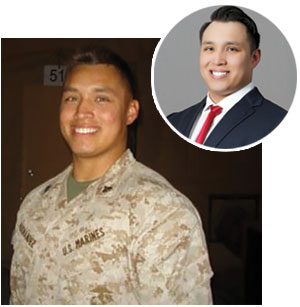

Ralph Hernandez credits the GI Bill with helping him get his life back on track after losing his job, home and marriage, as well as suffering from severe depression, anxiety and post-traumatic stress disorder as a result of his service in Afghanistan.
“I wanted to better myself mentally, physically, and give myself an opportunity to succeed with an education,” the Marine Corps veteran said. “With each passing semester, I gained pride, confidence, and the world seemed a little better and a little brighter.”
Hernandez eventually earned a Master of Business Administration from Texas A&M University. He is now remarried and works as a real estate agent helping fellow veterans find homes.
“Though my scars and struggles still remain, I no longer live by them,” he said. “Their grasp, which once seemed firm and unrelenting, has long since passed and has been replaced with knowledge, wisdom and gratefulness.”
As for Lienert, she is now the president and CEO of a multimillion-dollar defense contracting company that employs over 100 people—more than 65 percent of whom are veterans.
“Thank you, United States Air Force and the GI Bill,” she said.




